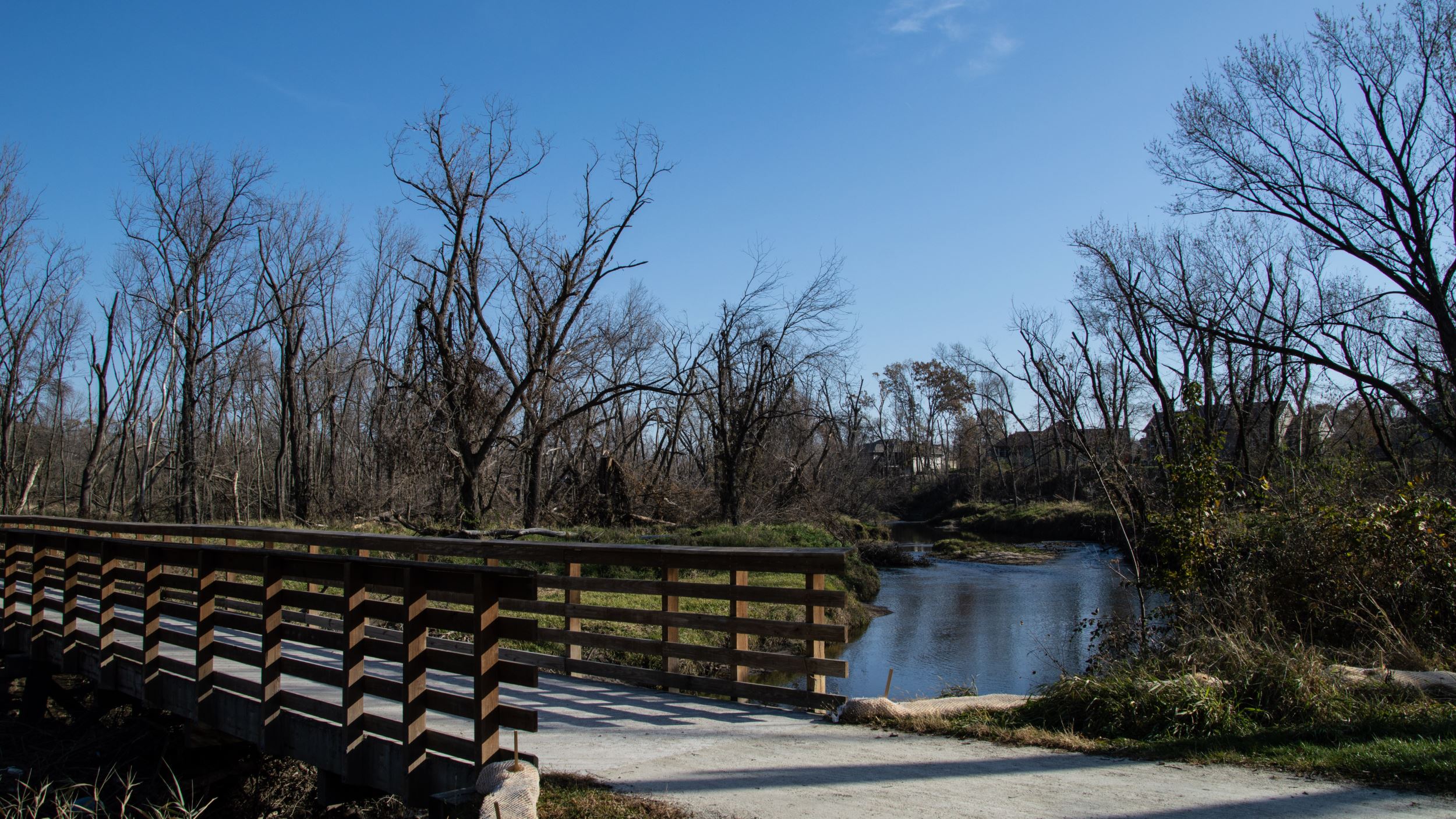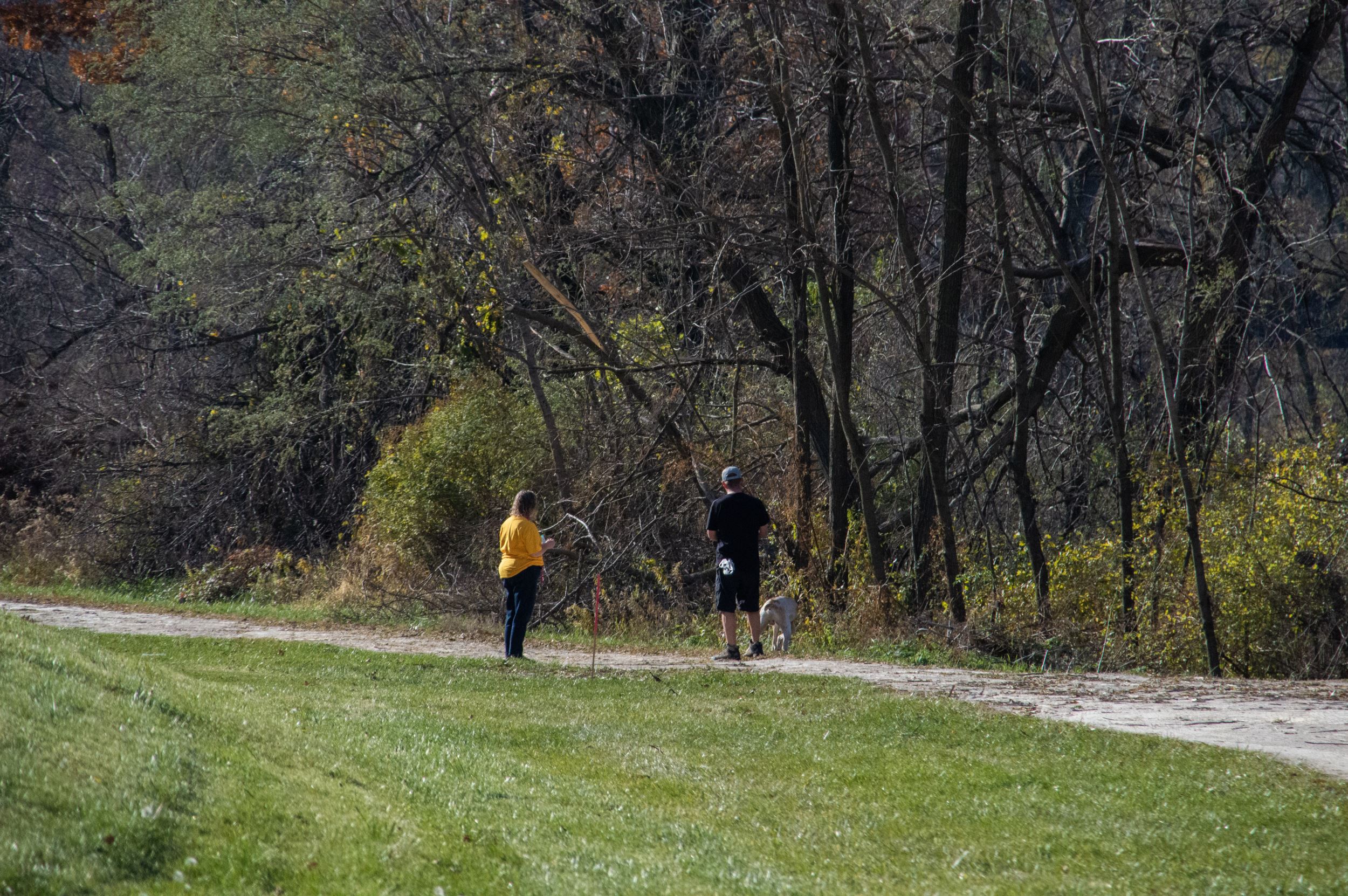A New Era of Trails in Eastern Iowa
By Courtney Ball on May 26, 2021 in Blog

Ely, Iowa has come full circle. In the past hundred years it’s gone from a thriving town in the early 1900s, to a bedroom community for Cedar Rapids commuters, to a destination all its own.
From the highway, Ely, which is a mere ten-mile drive from downtown Cedar Rapids, may not catch the eye of passing motorists. Hop on a bicycle, though, and your view of the town is transformed. One of the first things you encounter when entering Ely by trail is a beautiful, well-maintained city park. A little farther down is Dan and Debbie’s Creamery, offering delicious ice cream and other locally produced treats. Another block south along the trail is Ely’s historic business district on Dow’s Street, featuring the kind of quaint main street scene many associate with rural Iowa. The only difference is the increased number of bicycles.
Ely sits along a heavily used, rapidly growing trail corridor that currently stretches approximately 75 miles from Waterloo to Solon. The recently completed section of the Hoover Nature Trail from Ely to Solon is a significant marker in the decades-long work of connecting communities in the region by trails.
Good Timing
“This past year, we saw trail usage and outdoor activity usage go through the roof,” said Brad Freidhof, conservation program manager for Johnson County Conservation.
Since moving into this position in 2014 Freidhof’s main focus has been the implementation of Johnson County’s trail plan. 2020 was an affirmation of all the work so many people have put into building trails.
“When businesses were closing down [due to the pandemic] and you couldn’t find a gym [to exercise in], you were out on the trail. You could spread out, you had six-feet of distance between each other, and there was also just that mental health aspect. People could clear their mind as they walk, get some fresh air and relax,” he said.
While there was a spike in 2020, trail usage has been steadily climbing in eastern Iowa for several years. This is due in large part to the fact that there are simply more trails to explore, the result of decisions made several years ago to create a massive new public amenity for the region.

Groundbreaking Decisions
Building trails is no small feat. Most trails take years to complete, their course shaped by a number of contributing factors including planning, funding, navigating corridor negotiations, engineering considerations and construction timelines.
"From the time I bring a trail concept to the public to the time they’re riding on it, it’s at least seven years, and that’s if nothing went wrong,” said Brandon Whyte, multimodal transportation planner for the Corridor Metropolitan Planning Organization (MPO) in Linn County. And often, something goes wrong. “You can have one property owner who doesn’t want to sell, and that can delay a project for years."
But perhaps the greatest obstacle of any trail project is funding.
In 2008, Johnson County voters passed a conservation bond that would provide $1 million per year over twenty years for conservation projects, including trails. This local money has been used as crucial match funding when applying for state and federal grants.
When it came to Johnson County’s section of the Hoover Nature Trail between Ely and Solon, Freidhof said, “We applied for just about every grant you can think of.
The Hoover Trail segment between Ely and Solon received State Recreational Trails, Federal Recreational Trails and Federal Lands Access Program funds administered by the Iowa Department of Transportation and the Federal Highway Administration. These grants, along with other funding streams, created additional momentum behind the project.
“All those people were great partners,” Freidhof said.
In Linn County, a similar boost in funding came from a 2012 decision made by the Corridor MPO to allocate 80% of the dollars it received from federal gas tax revenue to trails. This was an unprecedented move by the MPO, which would go on to invest $3-4 million per year for five years into trails throughout the county.
Kesha Billings, an associate planner who now focuses almost exclusively on trails for the City of Marion, recalls the day when the MPO announced their decision.
“I remember they said, ‘You know what, the CeMar Trail [connecting Cedar Rapids and Marion] has been something that we’ve been talking about for decades. Let’s just put the funding where our mouth is. Marion, you’ve got the last chunk. You tell us what we need to make to happen.’ I was like, ‘What?!’,” she said, recalling her shock, excitement and brief disbelief.
Funding allocations stemming from this decision began in 2016 and will continue through 2021. The trail is slated to open sometime between 2022 and 2023.
Long-term visionaries
While both the Hoover Nature Trail and the CeMar Trail have made significant strides in the past decade, the roots of these projects actually extend several decades.
Iowa Natural Heritage Foundation (INHF) began focusing on trails across the state in the early 1980s. The Cedar Valley Nature Trail, a 52-mile rail-trail that takes trail users through four counties, seven communities and idyllic Iowa countryside on its way from Evansdale to Hiawatha, was one of INHF’s first rail-trail projects and one of the state’s first linear parks. Through partnership with Linn County Conservation, the project, which follows the Cedar River bottomlands, has served as the inspiration for many of the region’s more recent trails that extend through multiple communities and counties.
.jpg)
INHF aided the creation of the original Hoover Nature Trail, a crushed limestone rail-trail following the old Chicago, Rock Island and Pacific Railroad route between Burlington, Muscatine and Cedar Rapids, the vision of a determined group of volunteers in the 1990s.
The full potential of the Hoover Nature Trail has yet to be realized, with some gaps in the route, but the audacity of the dream represented by the Cedar Valley Nature Trail and the Hoover Nature Trail has helped enable other trails in eastern Iowa. Both the CeMar Trail in Cedar Rapids/Marion and the Hoover Nature Trail between Ely and Solon connect to these original rail-trails.
Local organizations, including the Linn County Trails Association (LCTA), have been essential in shepherding a long-term vision for a regional trail system into existence. Diane Handler, a long-time member and former president of LCTA, remembers when she started her advocacy work in the early nineties and trails were a new concept in Iowa.
“It was constant resistance against trails at that point, and now you talk about trails and everybody’s like, ‘Oh yeah, I want one in my backyard!’"
Thanks to the decades-long work of organizations like LCTA, INHF, county and municipal groups, and the many individual trail advocates in communities across the eastern Iowa corridor that have committed countless hours to recognizing a bold trails vision for the region, more Iowans will soon have more trails in their communities.
“You’re going to be surprised in the next two years,” said Whyte. “There are going to be a lot more trails” in Linn and Johnson counties.